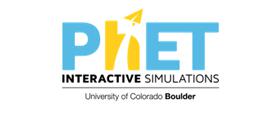The concept of force
As another abstract concept it is vital to get your students to see that forces are understood by the changes that they initiate. They need to learn that we classify forces as either contact forces or action at a distance forces.
Use this video to get fired up to teach the topic. The box demonstration is the best starter for your first lesson. Use it to get your students thinking about forces in the most general context before you focus on specific aspects of the topic. Gravity (an action at a distance force) gives the box its weight, in contact with the table the normal reaction (a contact force) balances weight so there is no resultant force and therefore there is no change in motion, but the box hanging over the table pulled up by the helium balloon gives plenty to discuss. The ideas involved link back to ideas in the kinetic theory list.
Simplifying a situation such as a ladder leaning against a wall as a free body diagram is at first a challenge, but with practice your students will learn the power of the strategy. By using vectors to represent forces they can evaluate the effect of these forces. If these forces lead to a resultant force there will be a change in motion. If the forces are balanced then there will be no change in motion, but there could be a change in shape! In analysing examples they will be covering math skills that practise using angular measure and visualising 2D and 3D representations.
Whilst this list provides a source of information and ideas for experimental work, it is important to note that recommendations can date very quickly. Do NOT follow suggestions which conflict with current advice from CLEAPSS, SSERC or recent safety guides. eLibrary users are responsible for ensuring that any activity, including practical work, which they carry out is consistent with current regulations related to Health and Safety and that they carry an appropriate risk assessment. Further information is provided in our Health and Safety guidance.
- ALL
- Teacher guidance
- Video
- Interactive resource
- External link
Teacher guidance
Forces 11-14
This guidance and suggested activities from the IOP is excellent. For this list use the sections Forces - a way of looking at the world and Non-contact forces. The advice in Forces - a way of looking at the world on representing examples of forces acting as point masses with simplified forces is very useful. Use the activity Falling objects to challenge the common misconception that heavier objects fall faster than lighter objects.
Scalar or vector?
The activities in this resource ask pupils to identify the scalar and vector quantities associated with a lorry. It also asks pupils to identify the forces acting on the lorry.
Video
Vectors
This resource is a video with a maths approach to vectors. Use its practical ideas and demos to help you prepare your lesson on the subject. The fan blowers demonstration can be refined and practised to convincingly show the effect of two velocities acting on a single object.
Centre of mass of a 2D shape
This video introduces and explains the centre of mass, sometimes called the centre of gravity, and how to determine it for a 2D shape.
Verifying the principle of moments
This video demonstrates a simple experiment to investigate the principle of moments.
Interactive resource
Gravity Force Lab
It is one thing to tell your students that gravity is an example of an action at a distance force and that this force acts between all objects. It is another thing to get them to believe you. Use this simulation to firmly plant the idea.
External link
Free body diagrams
A brilliant website article looking at free body diagrams. The article discusses what a free body diagram is and why they are used, along with some interactive examples, finishing up with practice questions.
Vectors
A brilliant website article looking at vectors and direction. The article discusses what a vector is and why they are used, along with how to represent a vector.






